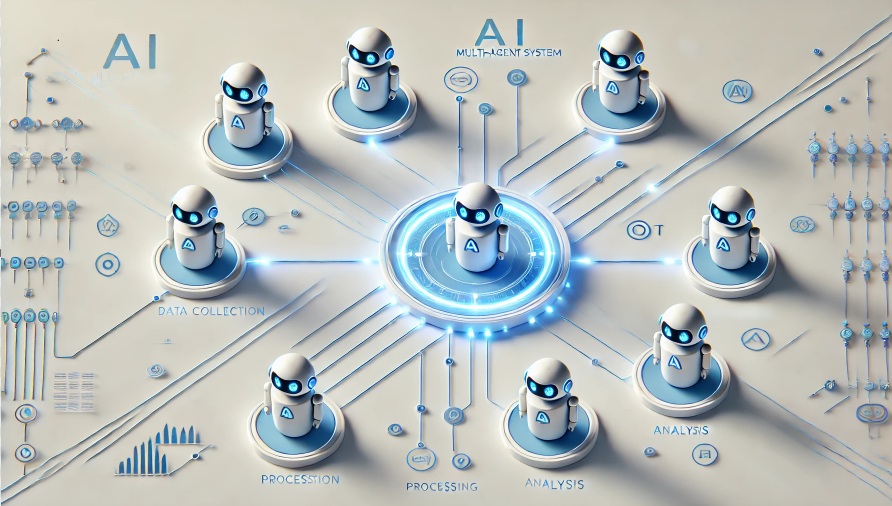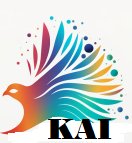
As businesses expand, the demand for innovative solutions becomes critical. This is where multi-agent AI comes in. Multi-agent AI refers to systems where multiple intelligent agents work collaboratively. Unlike single AI systems, which operate in isolation, multi-agent frameworks leverage collaboration, enabling multi-agent in content development to specialize in different tasks. This approach fosters a more efficient and streamlined workflow, allowing organizations to navigate complex challenges effectively.
Content Development Revolution
The content development landscape is rapidly evolving. Multi-agent AI systems are redefining how content is created, optimized, and delivered. Here are some of the critical tasks that these specialized agents can manage:
Idea Generation
One of the primary roles of multi-agent systems is idea generation. Agents can sift through vast datasets, including social media trends and user engagement metrics. For instance, using natural language processing, agents can detect popular topics and sentiments, sparking relevant ideas for content.
Research
Once an idea is generated, research agents come into play. These agents can autonomously scour academic databases, industry reports, and reputable blogs. They gather vital information, improving the accuracy and depth of the content. This automation drastically reduces the time spent on research, allowing human writers to focus on higher-level tasks.
Content Drafting
Following research, the drafting process can begin. Word processors and AI-driven writing assistants can collaborate to produce content. These agents use predefined templates and corporate guidelines to generate a coherent draft. The result is faster content creation without sacrificing quality.
SEO Optimization
Agents dedicated to SEO work tirelessly to ensure content meets visibility standards. They analyze keyword performance, suggest enhancements, and even recommend structural changes. According to a report by Moz, over 70% of clicks go to the first five results on search engines. Hence, using SEO agents increases the likelihood of reaching a broader audience.
Quality Evaluation
Finally, quality evaluation agents review the content for adherence to compliance and brand voice. These agents check for grammatical errors, ensure legal compliance, and validate that the content aligns with the brand’s tone. This stage ensures that the content is not only accurate but also resonates with the target audience.
Workflow Automation
Multi-agent AI can effectively manage complete content pipelines, resulting in seamless workflow automation. Here’s how:
From User Input to Deployment
User input often drives the content creation process. Clients or team members can feed parameters into the system, such as desired tone, target audience, or specific keywords. With this input, the multi-agent system coordinates the workflow—stimulating idea generation, conducting research, drafting content, optimizing for SEO, and performing quality checks—all in one go.
Reducing Human Workload
By automating these processes, businesses reduce human workloads significantly. A study by McKinsey reveals that companies leveraging AI can reduce operational costs by up to 30%. This allows human employees to focus on strategic initiatives rather than mundane tasks.
Maintaining Quality
Despite the heavy lifting done by agents, quality control remains critical. Multi-agent systems incorporate feedback loops that allow for continuous improvement. Agents can learn from user interactions, refining their processes based on feedback and results. This creates a cycle of sustained quality and performance.
Business Growth Impact
Integrating multi-agent systems leads to substantial business advantages. Consider the following benefits:
Increased Productivity
Implementing multi-agent AI workflows significantly enhances productivity. Companies can create and deploy content at a much faster pace. According to a Deloitte report, firms using AI tools reported productivity increases of 40% or more.
Faster Turnaround
Speed is of the essence in today’s fast-paced market. Multi-agent AI reduces bottlenecks, allowing businesses to respond quickly to market changes and consumer demands. Faster content creation helps companies maintain a competitive edge and seize opportunities.
Scalability
Multi-agent systems facilitate scalability. As businesses grow, their content needs expand. Traditional workflows may buckle under pressure. However, multi-agent frameworks adapt and scale autonomously, handling increased demands without requiring substantial investment in human resources.
Smarter Decision-Making
By relying on data-driven insights from research agents, companies can make informed decisions. Multi-agent AI can present analytical reports, identify trends, and forecast outcomes. This enhances strategic planning and resource allocation.
Human-in-the-Loop Integration
Despite the many advantages of automation, human involvement remains paramount in preserving creativity, compliance, and brand voice. Here’s how:
Ensuring Creativity
While AI excels in data processing, it lacks emotional intelligence. Human creativity is essential for tasks such as storytelling and brand messaging. Human reviewers can infuse creativity and cultural relevance into AI-generated content, giving it a unique touch.
Compliance Assurance
In certain regulated industries, compliance is crucial. Human reviewers can verify that all produced content adheres to legal standards. This process minimizes the risk of non-compliance and potential liabilities.
Enhancing Brand Voice
Brand identity is pivotal for customer retention. Humans can ensure that AI-generated content reflects the desired brand voice, thereby fostering a consistent image. This alignment strengthens the connection between businesses and their clients.
Real-World Use Cases
Many organizations are effectively leveraging multi-agent systems. Here are a few examples:
1. HubSpot for Marketing
HubSpot employs multi-agent AI to streamline its marketing efforts. Automated agents monitor social media trends, analyze user engagement, and generate content strategies. Their comprehensive approach increases customer outreach and engagement.
2. IBM Watson for Data Analysis
IBM Watson is an industry leader in applying multi-agent systems for data analysis. Companies leverage Watson’s agents to interpret vast datasets, generating actionable insights. This capability helps businesses refine their marketing strategies and product offerings.
3. Drift for Customer Engagement
Drift uses multi-agent AI to enhance customer engagement. Their chatbots, powered by multiple agents, manage inquiries instantaneously. They collect feedback and make personalized recommendations, improving customer satisfaction and loyalty.
Future Trends
Emerging trends indicate that multi-agent ecosystems will increasingly reshape digital business models and creative industries.
Adaptive Learning
Future multi-agent systems will likely incorporate adaptive learning mechanisms. Agents will evolve through feedback, continuously optimizing their outputs based on user interactions and preferences.
Enhanced Collaboration
As AI continues to evolve, future multi-agent systems may facilitate cross-platform collaborations. Such collaborations will increase effectiveness in various sectors, streamlining workflows across multiple departments.
Industry-Specific Applications
We can anticipate more tailored solutions for specific industries. For instance, the healthcare sector may adopt specialized agents dedicated to compliance, patient engagement, and data security.
Conclusion
In conclusion, adopting multi-agent AI systems is no longer a matter of choice; it’s an essential strategy for sustained growth. These systems enhance content creation, streamline workflows, and facilitate smarter business decisions. Companies willing to embrace this innovative approach will lead their industries, positioning themselves for success in the digital economy. Multi-agent AI is indeed paving the way for a new era in business operations.
Published by: Kamrun Analytics Inc.
